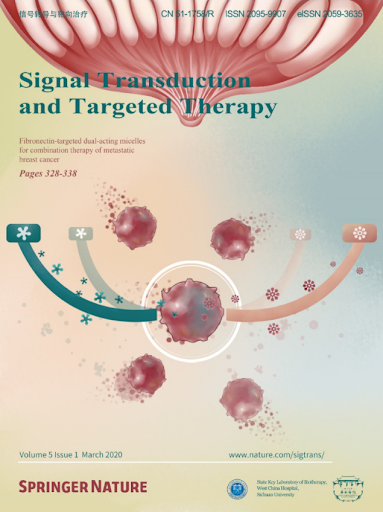Spatiotemporal multi-omics analysis uncovers NAD-dependent immunosuppressive niche triggering early gastric cancer.
IF 52.7
1区 医学
Q1 BIOCHEMISTRY & MOLECULAR BIOLOGY
引用次数: 0
Abstract
Understanding the cellular origins and early evolutionary dynamics that drive the initiation of carcinogenesis is critical to advancing early detection and prevention strategies. By characterizing key molecular, cellular and niche events at the precancerous tipping point of early gastric cancer (EGC), we aimed to develop more precise screening tools and design targeted interventions to prevent malignant transformation at this stage. We utilized our AI models to integrate spatial multimodal data from nine EGC endoscopic submucosal dissection (ESD) samples (covering sequential stages from normal to cancer), construct a spatial-temporal profile of disease progression, and identify a critical tipping point (PMC_P) characterized by an immune-suppressive microenvironment during early cancer development. At this stage, inflammatory pit mucous cells with stemness (PMC_2) interact with fibroblasts via NAMPT ⟶ ITGA5/ITGB1 and with macrophages via AREG ⟶ EGFR/ERBB2 signaling, fostering cancer initiation. We established gastric precancerous cell lines and organoids to demonstrate that NAMPT and AREG promote cellular proliferation in vitro. Furthermore, in the transgenic CEA-SV40 mouse model, targeting AREG and/or NAMPT disrupted key cell interactions, inhibited the JAK-STAT, MAPK, and NFκB pathways, and reduced PD-L1 expression, which was also confirmed by western blot in vitro. These interventions delayed disease progression, reversed the immunosuppressive microenvironment, and prevented malignant transformation. Clinical validation was conducted using endoscopically resected EGC specimens. Our study provides a precise spatiotemporal depiction of EGC development and identifies novel diagnostic markers and therapeutic targets for early intervention.时空多组学分析揭示nad依赖性免疫抑制生态位引发早期胃癌。
了解驱动癌变起始的细胞起源和早期进化动力学对于推进早期发现和预防策略至关重要。通过表征早期胃癌(EGC)癌前临界点的关键分子、细胞和生态位事件,我们旨在开发更精确的筛查工具,并设计有针对性的干预措施,以预防这一阶段的恶性转化。我们利用我们的人工智能模型整合了来自9个EGC内镜粘膜下解剖(ESD)样本的空间多模态数据(涵盖从正常到癌症的顺序阶段),构建了疾病进展的时空图谱,并确定了早期癌症发展中以免疫抑制微环境为特征的关键临界点(PMC_P)。在这个阶段,具有干性的炎性窝粘膜细胞(PMC_2)通过NAMPT - ITGA5/ITGB1与成纤维细胞相互作用,通过AREG - EGFR/ERBB2信号与巨噬细胞相互作用,促进癌症的发生。我们建立了胃癌前细胞系和类器官,以证明NAMPT和AREG在体外促进细胞增殖。此外,在转基因CEA-SV40小鼠模型中,靶向AREG和/或NAMPT破坏了关键的细胞相互作用,抑制了JAK-STAT、MAPK和NFκB通路,降低了PD-L1的表达,体外western blot也证实了这一点。这些干预措施延缓了疾病进展,逆转了免疫抑制微环境,并防止了恶性转化。使用内镜切除的EGC标本进行临床验证。我们的研究提供了EGC发展的精确时空描述,并确定了早期干预的新诊断标记和治疗靶点。
本文章由计算机程序翻译,如有差异,请以英文原文为准。
求助全文
约1分钟内获得全文
求助全文
来源期刊

Signal Transduction and Targeted Therapy
Biochemistry, Genetics and Molecular Biology-Genetics
CiteScore
44.50
自引率
1.50%
发文量
384
审稿时长
5 weeks
期刊介绍:
Signal Transduction and Targeted Therapy is an open access journal that focuses on timely publication of cutting-edge discoveries and advancements in basic science and clinical research related to signal transduction and targeted therapy.
Scope: The journal covers research on major human diseases, including, but not limited to:
Cancer,Cardiovascular diseases,Autoimmune diseases,Nervous system diseases.
 求助内容:
求助内容: 应助结果提醒方式:
应助结果提醒方式:


